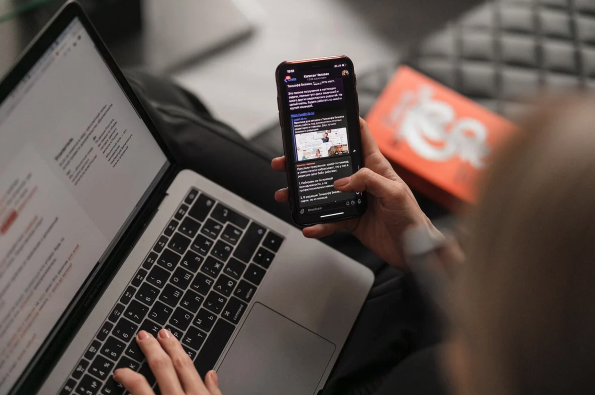Technology is incredible. Through it, we are able to connect with others from virtually anywhere. This past year especially, technology has allowed people to remain safe and socially distanced while still being able to work and stay in touch with others.
But for all the benefits, there are undeniable drawbacks to getting TOO much screen time.
With everything that has gone on this past year, it’s understandable that we have spent more time looking at a screen – whether that meant binge-watching a show, Zooming with family members we were unable to see, or keeping up with the latest news online.
But now that the fog of 2020 is beginning to clear, are those habits we should keep around?
“Americans averaged about four hours a day on their phone, up from three hours in 2019, according to data from App Annie, an app analytics firm. And that doesn’t include the time we spent glued to a TV screen, or doing online classes and taking meetings on a laptop.” – CNN
We spend about one-fourth of our day on screen, and about a third of it asleep – or trying to sleep, because all the screen time disrupts our natural sleep patterns.
It’s been proven that too much screen time is just not healthy. From “tech neck” or “text thumb,” to eye strain, back pain, and poor quality sleep, the physical toll is undeniable. And the mental toll may be even more destructive. Data show increased levels of depression, anxiety, and overall dissatisfaction with life, due in great part to our obsession with comparing our lives to others on social media. The carefully curated lives we envy are often “made for media” stories constructed to make the writer feel better about themselves. These stories begin to feel like reality – after all, we only have the screen to turn to for validation – and so we accept that everyone has a better life than we do. Better hop over to the next tab for a little retail therapy.
For all its convenience and seemingly extraordinary capacity for “connection”, screen time is NOT connection; it is a tool by which we can interact with others. True connection – the sustainable, satisfying, essence-of-life kind of connection – can happen only in real-time. We can keep in touch, catch up, check-in, and check out on screen. We can even initiate connection by sharing openly in on-screen communications, but the real connection has to happen in real-time.
Why? Because as humans, we are wired for true connection to happen as a result of many different factors coming together in very specific ways to let us know several important things about the person we’re connecting with. Are they safe? Can they listen? Do they see the real me? Am I sharing the “real” me with them, or just writing myself into the person they want to meet? So much of true human connection is determined by our non-verbal communications, such as our body language, facial expressions, and our general energy when in another’s presence. Those factors are either completely missing or greatly distorted when operating in screen time.
Absolutely, there are people who connect via email and written communications. They may develop a strong sense of connection if they are willing to be vulnerable enough over time. But even in those cases, most still crave an in-person meeting at some point, and that’s when they know if the connection is “real”.
Communicating in screen time can create a false sense of connection that may feel real in the moment, but is actually only a shadow of what happens when we connect with each other in real-time. Real relationships require real time spent in the presence of another human being.
Screen time is great for productivity and for distraction or entertainment, but don’t become dependent on it to replace true, human connection. We are not wired for that, and neither are our devices.
So what can we do about it?
Take a break.
Step away from the screen. Check yourself and evaluate where you may be spending TOO much time on your device. Set up some boundaries that require you to detach from your phone throughout the day (dinner time, in the presence of your kids or partner, etc.) and take time to do things outside or meet up with others when you can.
Get Real.
Remember that YOU are the human and the screen is a TOOL. It is not your friend, your boss, or your partner. You are in relationship with the PEOPLE in your life, and it’s the people you must learn to connect with.
While technology has helped us conveniently interact with one another like never before, it just can’t replace the genuine in-person human connection. Find a balance, and don’t let technology disrupt and negatively impact your life and relationships.

